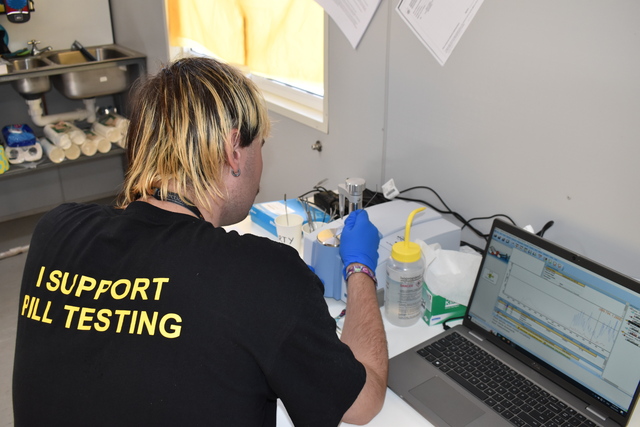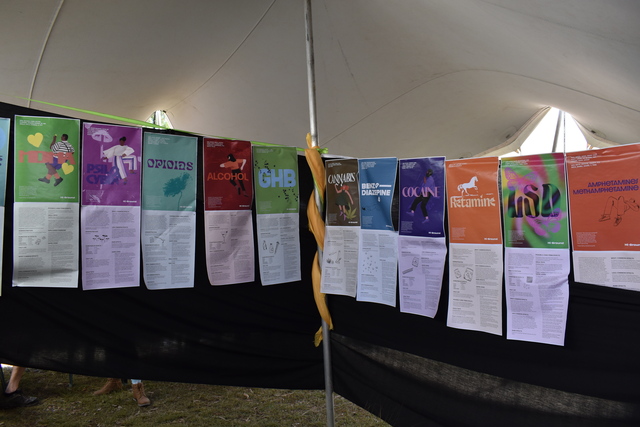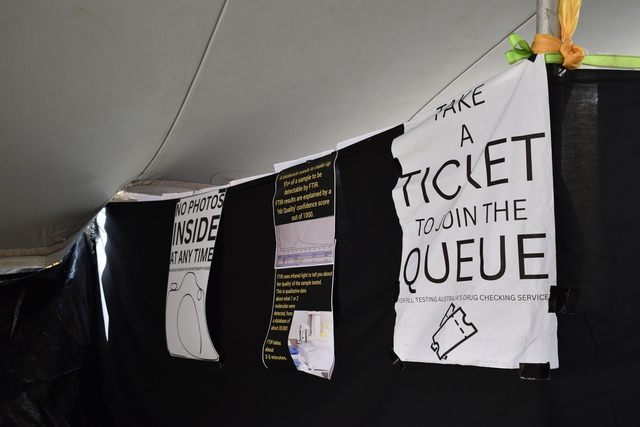
By Lucy Waldron and Jeremy Cook
Signalling a shift in harm reduction strategies, authorities have celebrated the success of Queensland’s first pill testing site at the Rabbits Eat Lettuce music festival in Cherrabah over the Easter weekend.
Managed by Pill Testing Australia, the event-based service at the festival drew in 257 festival-goers over the course of four days, offering crucial information about the substances they intended to consume.
Pill Testing Australia medical lead David Caldicott hailed the festival a success and estimated drug samples from close to 10 percent of festival goers were tested by the service.
“That’s one of the best performances from our group that we’ve been able to do,” Dr Caldicott said.
Festival organiser Erik Lamir echoed Dr. Caldicott’s sentiments, describing the event as highly successful, with minimal incidents of violence or medical emergencies where a hospital was needed.
“There were only three drug-related issues in the medical tent and 14 people discarded their drugs after finding out what was in them,” Mr Lamir said.
Mr Lamir said the initiative proved to be a very effective harm reduction measure and only a small cost to keep the priority of patrons’ safety.
The introduction of pill testing received support from Warwick Police Acting Inspector Jamie Deacon, who emphasised the importance of harm reduction in addressing drug-related risks.
“Drugs are still an illicit substance and we don’t condone or encourage people to take pills, but we understand that there are some people out there who are going to do that anyway,” A/Insp Deacon said.
“We would rather those people not die at a music festival,” he said.
“The way I see it is drug checking runs in parallel to our policing enforcement operation for illicit drugs and drug driving to make sure the community is safe.”
Over the Easter period, 78 drug drivers were detected by police in the Warwick area.
Acting Inspector Deacon said “quite a few” drivers were caught leaving the festival with drugs in their system, but otherwise applauded the behaviour of festival goers.
“I think they were actually a very well-behaved crowd,” he said.
“There were really very few issues within the venue itself.”
Dr Caldicott said the success of the service was not necessarily limited to the testing of substances, but could also be measured by the number of conversations his team had with festivalgoers about their drug use.
“That level of goodwill is one which allows very much an opportunity to chat about habits that may or may not be good for your health,” he said.
The pill testing service typically uses a colour-coded warning system to alert emergency services and festival organisers of particularly dangerous substances they identify.
Dr Caldicott said pill testers didn’t come across any “super dangerous drugs” where a “red warning” would be issued, but found several they might have issued a “yellow warning” for.
“They were mostly due to substitutions, so drugs not being what they were purported to be sold as,” he said.
Initial data analysis shows that out of the 210 samples provided for testing at the festival by qualified chemists, approximately 14 samples were discarded at the pill testing service.
The most common substances presented for testing included MDMA and ketamine.
Some higher-risk substances were identified including Dimethylpentylone, a synthetic cathinone, and 2-fluoro-2-oxo-phenylcyclohexylethylamine, which were both mis-sold as other substances. The latter was detected for the first time in Australia by the CanTEST drug-checking service in Canberra.
Health Minister Shannon Fentiman said she encouraged other jurisdictions across the country to follow the Queensland Government’s lead to keep their communities safe.
“These services will save lives and keep people safe,” she said.
A fixed site service is earmarked to commence in Brisbane in mid-April and will be delivered by a partnership of service providers. A second fixed site will be determined through co-design processes with people with lived experience.








